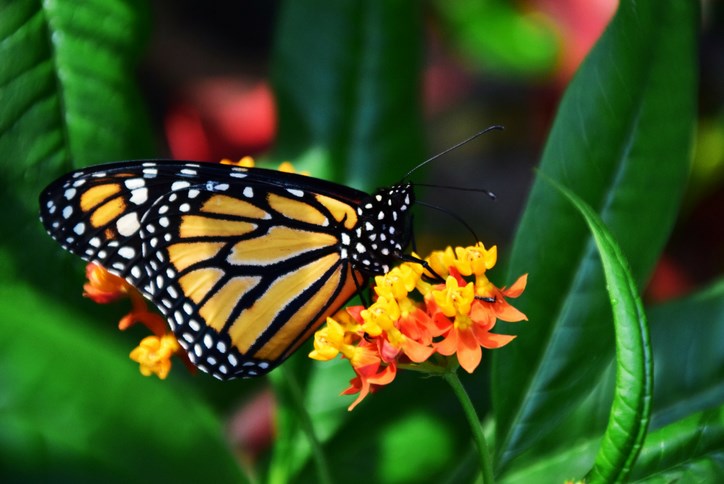
29 September . 2017
October brings migrating monarch butterflies to Austin – here’s how to help them
From Barton Springs and Zilker Park, to the Congress Avenue Bat Bridge and Sixth Street, there are countless weird and beautiful things that make Austin unique among the nation’s major cities.
Here’s another one: Austin is just about the best place to enjoy the fall migration of brilliant monarch butterflies during the month of October.
Austin is located right in the middle of the “Texas funnel,” part of the north-south migration path for the eastern population of monarch butterflies. As monarchs migrate from Canada to their winter habitat in Mexico, their flight path narrows in Texas and takes these striking orange and black butterflies right through the Austin area.
On October 21, Zilker Botanical Garden will celebrate Monarch Appreciation Day, a family friendly event with nature activities and crafts, the Earth Butterfly Mechica Dance Group and more. Hours are 9 a.m. to 4 p.m.
Although they seem to be plentiful, monarchs urgently need our help in order to rebound to a sustainable population level, according to Grace Barnett, Monarch Outreach Coordinator for the National Wildlife Federation in Austin.
Barnett said that Austin is one of more than 300 cities across the nation that have taken the Mayors' Monarch Pledge to help save the monarch butterfly. Austin is in the Leadership Circle, meaning it has committed to taking at least eight of the 24 actions outlined in the pledge.
Residents living in communities such as Sweetwater can help by planting gardens that provide food, water and places for monarchs to lay their eggs.
One of the most vital plants is milkweed, whose leaves are the sole source of food for monarch caterpillars. It is also important to plant nectar plants as food sources for adult monarchs. Going organic also helps, as it reduces pesticides and insecticides that can harm monarchs and other species.
If you don’t have a green thumb, you can help by reporting sightings of monarchs and tagging them. Both are essential contributions, Barnett said.
After they fly through Texas, the monarchs will arrive at their winter homes in the Mexican states of Michoacan and Mexico right around that country’s Day of the Dead celebrations in early November. That coincidence of timing provides the monarch with an extra layer of cultural significance in its winter home country, Barnett said.
She said that a winter count to be conducted in February will offer some insight into how well the monarch population has rebounded since an extreme winter storm in Mexico decimated their numbers in 2016.
The goal for a sustainable monarch population is one that covers six hectares, or about 15 total acres, of their winter grounds in Mexico, Barnett said. Right now, it’s slightly less than half of that.
The U.S. Fish & Wildlife Service is determining whether or not to list the monarch butterfly as a threatened or endangered species, and is expected to announce its decision in 2019. A status update video was released in August.
For now, enjoy the spectacle of watching millions of monarchs migrate through Austin, then plant some milkweed and nectar plants to help them out when they come back through for the spring migration.
Learn more about Sweetwater’s green living projects, which begin with the preservation of more than 700 acres for parks, trails and natural open space throughout the community.